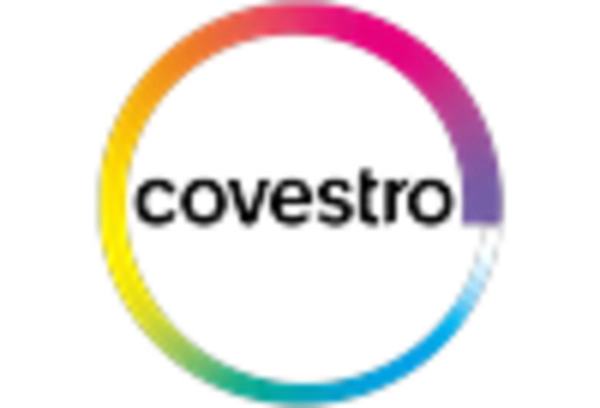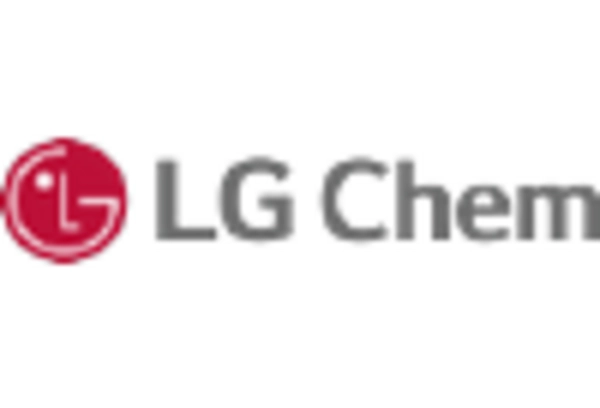Regulatory Support
Regulatory support is emerging as a vital driver for the Bio-Based Polyvinyl Chloride Market. Governments worldwide are implementing policies that promote the use of bio-based materials, aiming to reduce carbon footprints and enhance environmental sustainability. For instance, various countries have introduced incentives for manufacturers who utilize renewable resources in their production processes. This regulatory landscape not only encourages the adoption of bio-based PVC but also fosters innovation within the industry. Market data indicates that regions with strong regulatory frameworks for bio-based materials are experiencing faster growth in the bio-based PVC sector. Consequently, the Bio-Based Polyvinyl Chloride Market is likely to benefit from ongoing regulatory support, which could further accelerate its expansion.
Technological Innovations
Technological innovations play a crucial role in shaping the Bio-Based Polyvinyl Chloride Market. Advances in production processes, such as the development of more efficient catalysts and fermentation techniques, have significantly improved the feasibility of bio-based PVC production. These innovations not only enhance the quality of the final product but also reduce production costs, making bio-based alternatives more competitive against traditional PVC. Market data suggests that the adoption of these technologies could lead to a reduction in production costs by up to 20%, thereby increasing the attractiveness of bio-based options for manufacturers. As technology continues to evolve, it is likely that the Bio-Based Polyvinyl Chloride Market will witness further growth driven by enhanced production capabilities.
Sustainability Initiatives
The increasing emphasis on sustainability initiatives is a pivotal driver for the Bio-Based Polyvinyl Chloride Market. As consumers and businesses alike become more environmentally conscious, the demand for sustainable materials rises. Bio-based polyvinyl chloride, derived from renewable resources, offers a viable alternative to traditional PVC, which is petroleum-based. This shift is reflected in market data, indicating that the bio-based segment is projected to grow at a compound annual growth rate of approximately 12% over the next five years. Companies are increasingly adopting bio-based materials to align with sustainability goals, thereby enhancing their market position. Furthermore, regulatory frameworks are evolving to support the use of bio-based products, creating a favorable environment for the Bio-Based Polyvinyl Chloride Market.
Collaboration Across Industries
Collaboration across industries is becoming a key driver for the Bio-Based Polyvinyl Chloride Market. Partnerships between manufacturers, research institutions, and environmental organizations are fostering innovation and accelerating the development of bio-based materials. These collaborations often focus on improving the performance and sustainability of bio-based PVC, making it a more attractive option for various applications. Market data suggests that collaborative efforts have led to the introduction of several new bio-based products in recent years, enhancing the overall market landscape. As industries continue to work together, the Bio-Based Polyvinyl Chloride Market is likely to experience increased growth and diversification, driven by shared knowledge and resources.
Consumer Demand for Eco-Friendly Products
The rising consumer demand for eco-friendly products is a significant driver for the Bio-Based Polyvinyl Chloride Market. As awareness of environmental issues grows, consumers are increasingly seeking products that align with their values, including those made from renewable resources. This trend is particularly evident in sectors such as construction, automotive, and packaging, where bio-based materials are gaining traction. Market data reveals that the demand for eco-friendly building materials, including bio-based PVC, is expected to increase by 15% over the next few years. This shift in consumer preferences is prompting manufacturers to invest in bio-based alternatives, thereby propelling the growth of the Bio-Based Polyvinyl Chloride Market.



















Leave a Comment